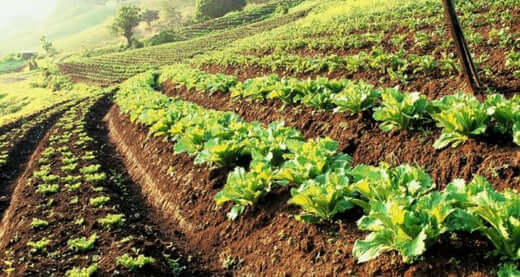Sustainable living practices continue to gain traction with everyday people who discover that you don’t need vast tracts of land to effectively homestead, states Dennis Sons of Tn Nursery. The shift to remote workforces and energy sources such as solar panels has many digital professionals thinking about taking the next logical step — creating a sustainable food supply.
But Wi-Fi reliance also prevents potential off-the-grinders from homesteading in remote landscapes. The hot-trending solution has been to make a strategic land purchase on a one-acre parcel outside the city limits. That offers digital professionals access to 5G networks without the strict regulations common to in-town neighborhoods. By drafting a long-term plan, everyday people can create a sustainable micro-farm. These are things to remember if you plan to join the homesteading movement.
Homestead Planning Checklist
It’s essential to set reasonable and actionable goals. For example, buying a one-acre parcel without a house means you will be tasked with either building one or hiring a contractor. If you are on a tight budget, plenty of DIY videos demonstrate basic construction practices. In all likelihood, you will need to comply with local building codes. That’s why buying plans from a certified architect is usually a good idea. Beyond building code conformity, other issues typically crop up.
- Perk Test: Achieving sustainability usually means getting “off the grid,” so speak. Avoiding a municipal sewer tie-in in favor of an onsite septic system saves a lifetime of fees. The land must pass a “perk test” before you can move forward. Land that does not perk is suspect on many levels.
- Water Supply: Drilling a well that produces clean, non-acidic water remains the key to success. If you are scouting the land, consider talking to abutters about their healthy water experience.
- Soil: Quality growing soil will make or break your one-acre micro-farm. Start by digging a 36-inch hole to check soil type. Make sure there is enough rich dirt to grow crops before hitting clay or sand.
- Energy: Getting off the grid means leveraging sustainable energy such as solar. Make sure the region has enough sunny days each year and clear space for panels. In a perfect world, your rooftop would support enough panels to power your needs.
- Hardwood Trees: Choosing a rich parcel in hardwoods such as oak, hickory, and cedar can offer years of firewood. This heating and cooking resource is green-friendly and minimizes the need for fossil fuels.
Once you find a parcel that checks these boxes and others unique to your goals, sustainability often calls for long-term planning. It’s not uncommon for enthusiastic homesteaders to run ahead and create gardens. A complete one-acre farm requires far more moving parts than many beginners realize.

Planning Your One-Acre Sustainable Farm
It may come as something of a surprise, but veggie gardens and chicken coops may rank among the last items drawn out on the micro-farm blueprint. Successful planning often begins with the last food source to bring in a yield. In other words, consider developing a strategy that includes slow-growing food sources such as fruit and nut trees first. Then work your way backward to berry-producing shrubberies, chickens, and lastly, veggie gardens.
- Trees: Walnut, hickory, almond, hazelnut, and pine nut trees can prove valuable assets. Sugar or red maple trees yield syrup, a good source of potassium and other nutrients. Fruit trees such as apples can help round out your tree-borne food resources.
- Shrubberies: Blueberries are a leading antioxidant. They may require careful protection from pests. These are often positioned on the outskirts of vegetable gardens and sometimes covered in netting—other berry plants to consider include; raspberry, huckleberry, and blackberry, among others.
- Veggies: The choices you make to till the land and grow vegetables should be driven by soil, climate, and seasonal changes. Check the growing zone and other considerations against which vegetables are likely to flourish.
- Plant Protection: There are natural ways to protect crops from insects. Garlic and onion gardens deter certain pests from attacking vulnerable vegetable plants. Marigolds, chrysanthemums, mint, and chives also act as plant protectors. Including these and others can help avoid using chemicals.
- Livestock: Micro-farms typically limit livestock to chickens and goats. Although a milk cow may sound like a terrific idea, barns, feed, and space considerations make them less viable than many initially believe.
It may also be in your best interest to create a watering system. Drilling holes can accomplish this into lengths of PVC pipe or typical garden houses. By hooking this directly into the well’s pumping station, homesteaders can trim hours of work off weekly farm chores.
Planning a homestead on one acre that delivers complete food sustainability generally requires time to think. Draw up an initial plan that includes these and other elements and let it sit for a week. Thoughtful consideration may prompt you to include shade trees, outdoor cooking areas, and gathering spaces. The one-acre sustainable homestead can be a rewarding endeavor that enhances the quality of life.


